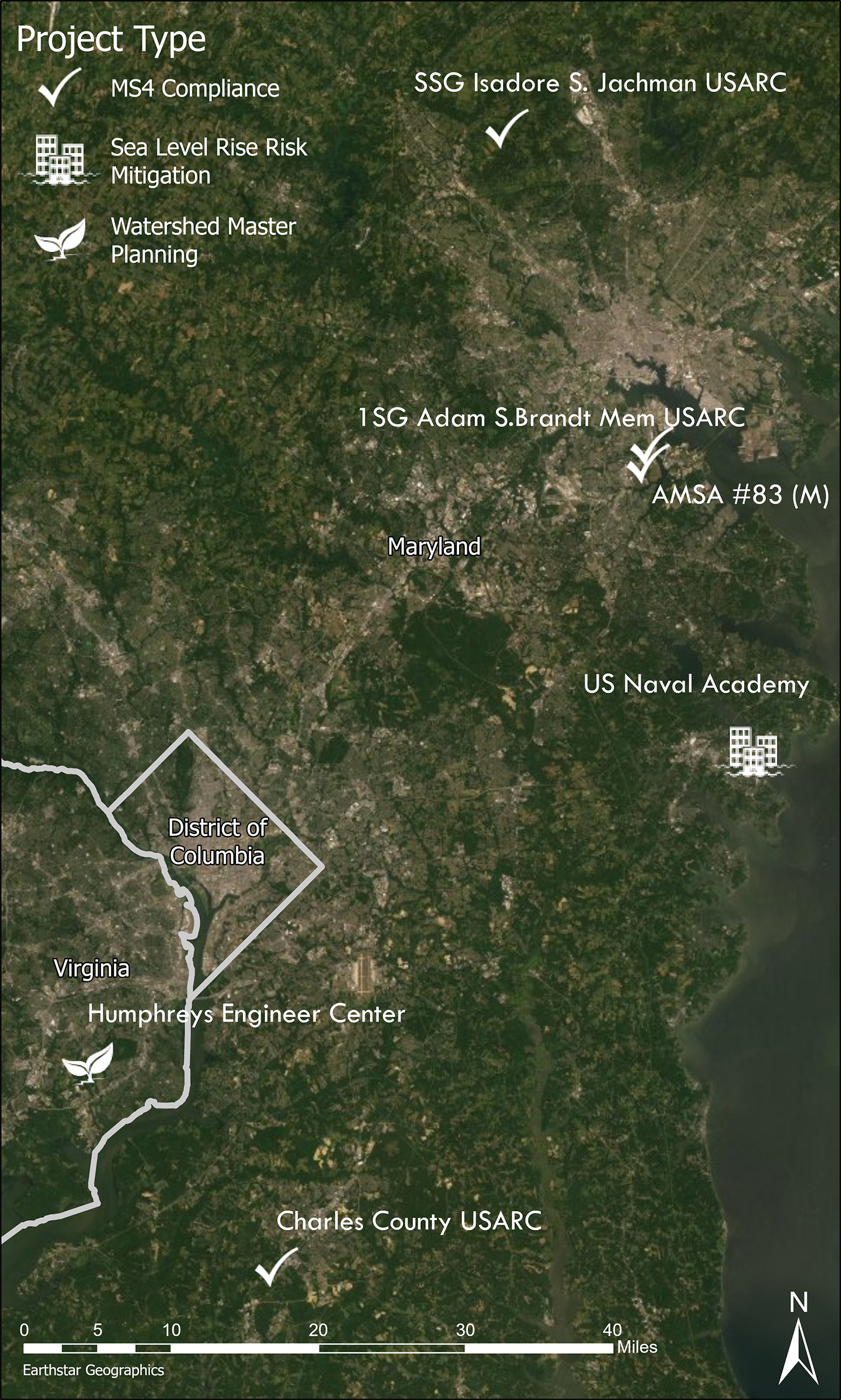The Department of Defense (DoD) identified climate change as a critical national security threat and is actively taking steps to address vulnerabilities across its facilities from stressors such as flooding, wildfires, and droughts. Forward looking planning and implementation are essential for DoD installations to ensure security, operational, infrastructure, and financial resilience. Our team is developing solutions for installations to anticipate, prepare for, and respond to hazardous events, trends, or disturbances related to climate, while improving the overall sustainability of a given project. Our focus is aligned with the facility administration’s goals of addressing water quality and managing flood risk. Accelerated climate change continues to exacerbate challenges causing potential long-term impacts to residents, infrastructure, and habitat.
Creating a Water-Carbon-Energy-Nexus
While climate threats create complex challenges for a given project, they provide opportunities to implement regional strategies based on an understanding of the water-carbon-energy nexus. This approach builds upon designing with nature and using natural and nature-based systems to help address multiple aspects of the impacts of climate change. Our solutions focus on utilizing water and ecological resources, such as using native landscaping to mimic natural pathways and processes. This allows us to make nature a resource rather than a constraint to mitigate. Understanding the hydrologic patterns, hydraulic pathways, physio-chemical processes, and biological components helps connect the dots to restore the innate natural design. This approach harnesses and utilizes pertinent aspects of the water-carbon-energy nexus for climate resilience and community benefits. Benefits include open space creation, water quality treatment train establishment, heat island effect minimization, reclamation, and potential beneficial reuse of stormwater and gray water.
While climate threats create complex challenges for a given project, they provide opportunities to implement regional strategies based on an understanding of the water-carbon-energy nexus. ”
Siva Sangameswaran and Carol Holland
Resilience Efforts on DoD Installations
We recently worked with the DoD to provide resilience services under three categories:
- Watershed master planning based on integrated and sustainable design principles
- Flood risk management for current and future sea level rise scenarios
- Phase II NPDES MS4 compliance support
Stormwater master planning efforts for the Humphreys Engineer Center used 2D rain on grid modeling to establish baseline conditions, including three facilities under various stages of design. Using hazard estimates, vulnerable hotspots were identified, followed by green infrastructure low-impact development conceptual design. We mimicked native site hydrologic patterns and natural processes to maintain open space and implement sustainable green infrastructure solutions to maximize water quality and flood risk reduction benefits. The proposed best management practices (BMPs) will reduce flood risk and enhance resilience of the BMPs designed as part of other facilities.
 We are currently working on several DoD sites throughout the Virginia and Maryland to provide MS4 compliance, sea level rise mitigation, and watershed master planning.
We are currently working on several DoD sites throughout the Virginia and Maryland to provide MS4 compliance, sea level rise mitigation, and watershed master planning.
The U.S. Naval Academy future flood risk mitigation project, based on sea level rise, is a classic example of leadership support, a scientifically based vulnerability assessment, and a natural systems-based engineering approach resulting in the identification of technically feasible, permittable, and cost-effective courses of action.
NPDES Phase II MS4 permit support projects at four U.S. Army Reserve facilities across Maryland included development of educational flyers, employee trainings, public planning outreach, illicit discharge detection guidelines development, sewer dye testing, and sediment control check lists.
These success stories are data points that validate that site specific, context sensitive, and sustainable measures can help establish and self-maintain long-term resilience and provide investment opportunities. We look forward to continuing to expand our sustainable and climate resilience solutions for our federal clients.